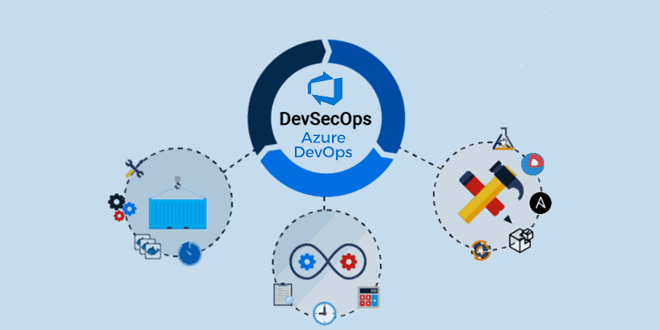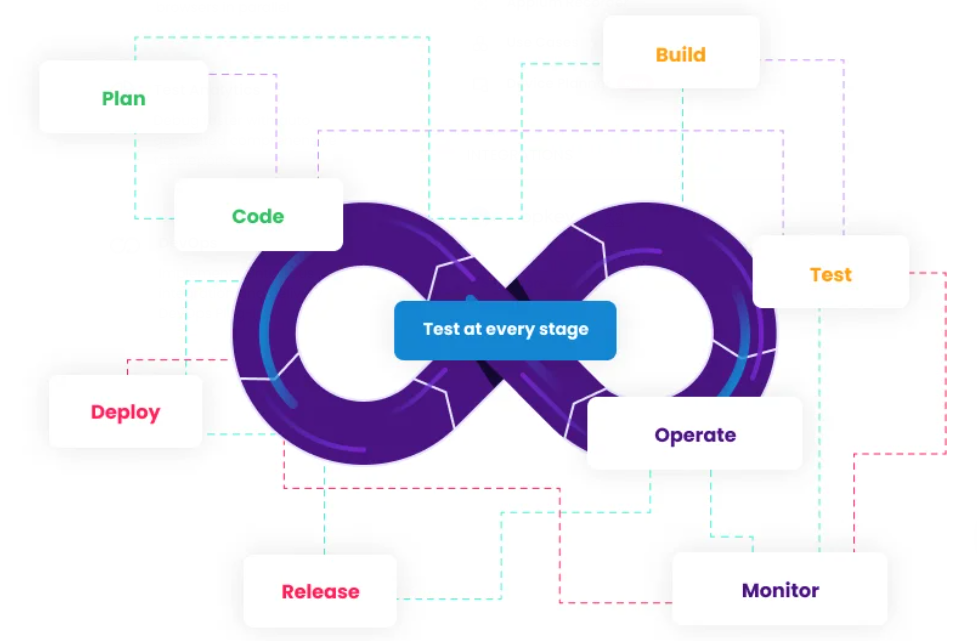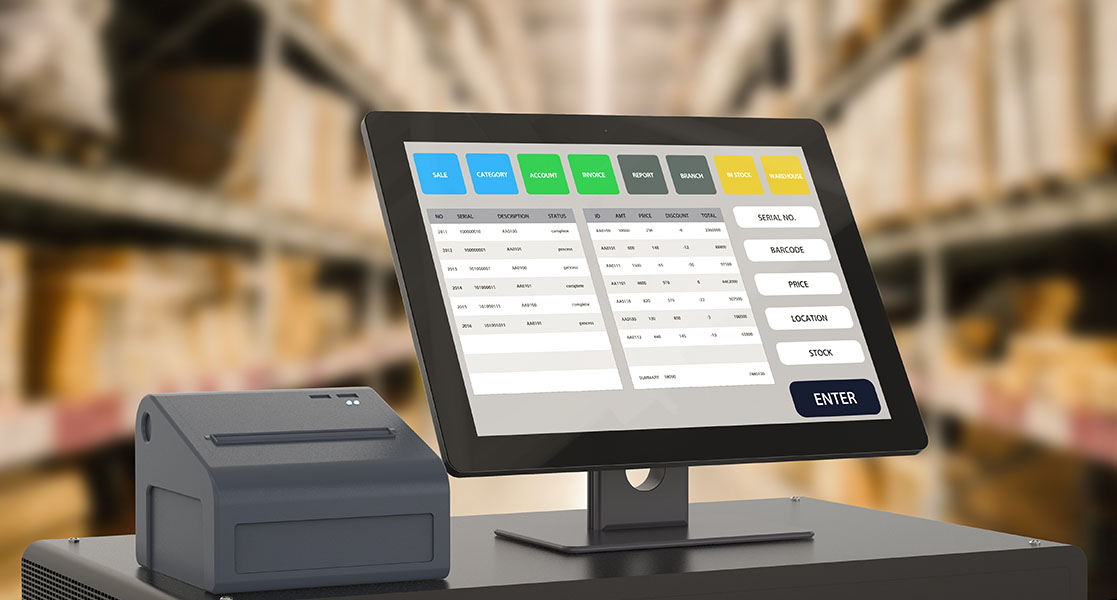Unlocking the power of data for optimized DevOps performance.
Understanding DevOps Metrics: Monitoring and Measuring Performance
DevOps is a software development approach that emphasizes collaboration, integration, and automation between development and operations teams. To ensure the success of a DevOps implementation, it is crucial to monitor and measure the performance of the processes and tools involved. This is where DevOps metrics come into play. DevOps metrics provide valuable insights into the efficiency, effectiveness, and overall performance of the DevOps practices. By monitoring and measuring these metrics, organizations can identify areas for improvement, optimize their processes, and drive continuous improvement in their DevOps initiatives. In this article, we will explore the importance of DevOps metrics, discuss some key metrics to consider, and highlight best practices for monitoring and measuring performance in a DevOps environment.
Key Performance Indicators (KPIs) for DevOps Metrics
Key Performance Indicators (KPIs) for DevOps Metrics
In the world of DevOps, metrics play a crucial role in monitoring and measuring performance. These metrics provide valuable insights into the efficiency and effectiveness of the DevOps processes, helping organizations identify areas for improvement and make data-driven decisions. Key Performance Indicators (KPIs) are specific metrics that are used to evaluate the success of an organization or a particular project. In this article, we will explore some of the most important KPIs for DevOps metrics and understand how they can be used to drive continuous improvement.
One of the primary KPIs for DevOps metrics is the deployment frequency. This metric measures how often new features, bug fixes, or updates are deployed to production. A high deployment frequency indicates that the organization is able to quickly respond to customer needs and deliver value at a rapid pace. On the other hand, a low deployment frequency may indicate bottlenecks in the development or deployment process that need to be addressed.
Another important KPI is the lead time for changes. This metric measures the time it takes for a code change to go from development to production. A shorter lead time indicates that the organization has efficient processes in place, enabling faster delivery of new features and bug fixes. A longer lead time, on the other hand, may indicate the presence of unnecessary delays or inefficiencies that need to be addressed.
The mean time to recover (MTTR) is another critical KPI for DevOps metrics. This metric measures the average time it takes to recover from a failure or incident. A low MTTR indicates that the organization has effective incident response processes in place, enabling quick resolution of issues and minimizing downtime. A high MTTR, on the other hand, may indicate the need for improvements in incident management and response.
The next KPI is the change failure rate. This metric measures the percentage of changes that result in a failure or incident. A low change failure rate indicates that the organization has robust testing and quality assurance processes in place, ensuring that changes are thoroughly tested before being deployed to production. A high change failure rate may indicate the need for improvements in testing or quality assurance practices.
The customer satisfaction score is another important KPI for DevOps metrics. This metric measures the satisfaction level of customers or end-users with the products or services delivered by the organization. A high customer satisfaction score indicates that the organization is meeting customer expectations and delivering value. A low customer satisfaction score may indicate the need for improvements in product quality or customer support.
Lastly, the employee satisfaction score is a KPI that should not be overlooked. This metric measures the satisfaction level of employees working in the DevOps teams. A high employee satisfaction score indicates that the organization has a positive work culture and provides a supportive environment for its employees. A low employee satisfaction score may indicate the need for improvements in team collaboration, communication, or work-life balance.
In conclusion, understanding and monitoring key performance indicators (KPIs) for DevOps metrics is essential for organizations looking to drive continuous improvement. These metrics provide valuable insights into the efficiency and effectiveness of the DevOps processes, helping organizations identify areas for improvement and make data-driven decisions. By measuring metrics such as deployment frequency, lead time for changes, mean time to recover, change failure rate, customer satisfaction score, and employee satisfaction score, organizations can gain a holistic view of their DevOps performance and take proactive steps to enhance their processes and deliver value to their customers.
Best Practices for Monitoring DevOps Performance
Understanding DevOps Metrics: Monitoring and Measuring Performance
In the world of DevOps, monitoring and measuring performance is crucial for ensuring the success of software development and delivery. By tracking key metrics, teams can gain valuable insights into their processes, identify bottlenecks, and make data-driven decisions to improve efficiency and productivity. In this article, we will explore some best practices for monitoring DevOps performance and discuss the importance of selecting the right metrics.
One of the first steps in monitoring DevOps performance is to establish clear goals and objectives. By defining what success looks like for your team or organization, you can identify the metrics that are most relevant and meaningful. For example, if your goal is to reduce the time it takes to deploy new features, you may want to track metrics such as deployment frequency, lead time, and change failure rate.
Once you have identified the metrics that align with your goals, it is important to establish a baseline. This baseline will serve as a reference point for future measurements and allow you to track progress over time. By regularly comparing current performance against the baseline, you can identify trends and patterns that may indicate areas for improvement.
In addition to establishing a baseline, it is also important to set targets or benchmarks for each metric. These targets should be realistic and achievable, but also challenging enough to drive continuous improvement. By regularly monitoring performance against these targets, teams can stay focused and motivated to meet their goals.
When selecting metrics for monitoring DevOps performance, it is important to consider both leading and lagging indicators. Lagging indicators, such as customer satisfaction or revenue, provide a retrospective view of performance and are often influenced by a combination of factors. Leading indicators, on the other hand, provide early warning signs and can help teams proactively address issues before they impact the end-user.
Another best practice for monitoring DevOps performance is to automate data collection and analysis. By leveraging tools and technologies, teams can streamline the process of gathering and analyzing metrics, saving time and effort. Automation also reduces the risk of human error and ensures consistency in data collection, making it easier to compare and interpret results.
In addition to automation, it is important to visualize metrics in a way that is easy to understand and interpret. By using charts, graphs, and dashboards, teams can quickly identify trends, patterns, and anomalies. Visualizations also make it easier to communicate performance data to stakeholders and facilitate data-driven discussions and decision-making.
While monitoring and measuring performance is important, it is equally important to take action based on the insights gained from metrics. By regularly reviewing performance data, teams can identify areas for improvement and implement changes to optimize processes and workflows. This iterative approach allows teams to continuously learn and adapt, driving continuous improvement and innovation.
In conclusion, monitoring and measuring performance is a critical aspect of DevOps. By selecting the right metrics, establishing baselines and targets, automating data collection and analysis, visualizing metrics, and taking action based on insights gained, teams can optimize their processes and drive continuous improvement. By embracing a data-driven approach, organizations can achieve greater efficiency, productivity, and success in their DevOps journey.
How to Use Metrics to Improve DevOps Processes
Understanding DevOps Metrics: Monitoring and Measuring Performance
In the world of DevOps, metrics play a crucial role in monitoring and measuring the performance of various processes. By collecting and analyzing data, organizations can gain valuable insights into their software development and deployment practices, enabling them to make informed decisions and drive continuous improvement. In this section, we will explore how metrics can be used to improve DevOps processes and enhance overall performance.
One of the key benefits of using metrics in DevOps is the ability to identify bottlenecks and areas for improvement. By tracking metrics such as lead time, deployment frequency, and change failure rate, organizations can pinpoint areas that are causing delays or hindering the delivery of high-quality software. For example, if the lead time metric is consistently high, it may indicate that there are inefficiencies in the development or testing processes that need to be addressed.
Metrics can also help teams identify trends and patterns over time. By tracking metrics on a regular basis, organizations can identify whether their efforts to improve processes are having a positive impact. For instance, if the deployment frequency metric shows a steady increase over time, it may indicate that the team’s efforts to automate and streamline the deployment process are paying off.
Furthermore, metrics can provide valuable insights into the impact of changes and improvements. By comparing metrics before and after implementing a change, organizations can determine whether the change has had the desired effect. For example, if the change failure rate metric decreases after implementing a new testing strategy, it suggests that the change has improved the overall stability of the software.
To effectively use metrics in DevOps, it is important to establish clear goals and objectives. By defining what success looks like and aligning metrics with these goals, organizations can ensure that they are measuring the right things. For instance, if the goal is to improve the speed of software delivery, metrics such as lead time and deployment frequency would be more relevant than metrics related to code quality.
In addition to selecting the right metrics, it is crucial to establish a feedback loop to continuously monitor and analyze the data. By regularly reviewing metrics and discussing the findings with the team, organizations can identify areas for improvement and take proactive measures to address them. This feedback loop also helps foster a culture of continuous improvement, where teams are encouraged to experiment, learn from failures, and iterate on their processes.
It is worth noting that metrics alone are not a silver bullet. While they provide valuable insights, they should be used in conjunction with other qualitative and quantitative data to get a holistic view of performance. For example, metrics related to customer satisfaction or employee engagement can provide additional context and help organizations understand the impact of their processes on various stakeholders.
In conclusion, metrics are a powerful tool in the DevOps toolbox. By monitoring and measuring performance, organizations can identify bottlenecks, track trends, and evaluate the impact of changes. However, it is important to select the right metrics, establish clear goals, and maintain a feedback loop to ensure that metrics are used effectively. By doing so, organizations can drive continuous improvement and enhance their DevOps processes, ultimately delivering high-quality software more efficiently.In conclusion, understanding DevOps metrics is crucial for monitoring and measuring performance in the DevOps environment. By tracking and analyzing key metrics such as deployment frequency, lead time, and mean time to recover, organizations can gain valuable insights into their software development and delivery processes. These metrics help identify bottlenecks, measure efficiency, and drive continuous improvement in the DevOps practices. Additionally, the use of appropriate monitoring tools and automation can further enhance the accuracy and effectiveness of DevOps metrics. Overall, a comprehensive understanding of DevOps metrics enables organizations to optimize their performance, enhance collaboration, and deliver high-quality software products efficiently.




